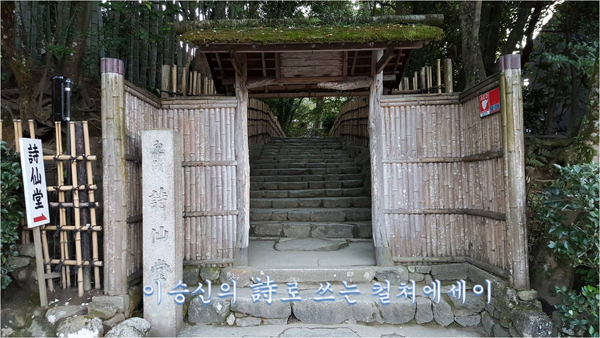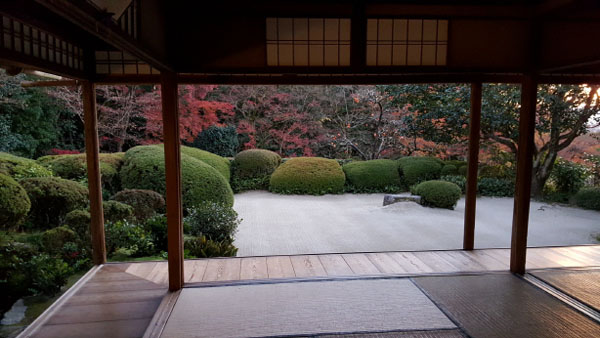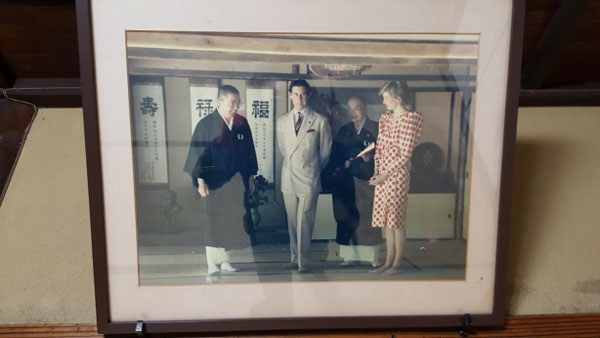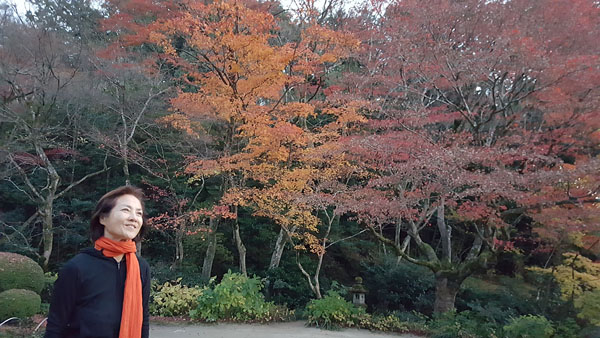I ride a subway train for 10 minutes and get off at Ichijoji station. There are several historic temples and a tree in a small alley. A legendary samurai Miyamoto Musashi is said to have dueled under that tree.
And there is Sisendo, or ‘Poet’s Garden.’
I heard of the name ‘Poet’s Garden’ a few years ago and my heart started to beat with excitement.
Japanese gardens usually belong to shrines, the emperor or daimyos and this garden was called “Poet’s Garden”? I asked around and visited Poet’s Garden and it didn’t disappoint me.
I pushed open a simple bamboo door and went up the stone stairs between the bamboo walls to find a room with a tatami floor. I sat in the room silently and found a porch spreading from tatami and a garden spreading in front. The simple garden was attractive and amiable. I could feel the hard work that took to build the garden.
The garden in May was special with royal azalea. The garden in the middle of summer with its rattan was fresh. And this late autumn, with its orange autumn colors, the garden is deep and elegant.
Ishikawa Jozan1583-1672 who built this garden, was a famous samurai who was one of the closest aides of Tokugawa Ieyasu. He rendered distinguishing services in Ieyasu’s becoming shogun and defeating Toyotomi Hideyoshi. Then he relinquished his samurai status and looked after his mother in Hiroshima. After his mother died, he came to Kyoto, and built Sisendo when he was 59 years old.
As if to prove that if you excel at one thing you excel at other things as well, Jozan distinguished himself in poetry and studies as well as war. He was also a great architect; the garden of change and harmony that he built is comfortable and beautiful. There is a small room overlooking the moon on the second floor.
A room overlooking the moon – how poetic is that?
He liked Chinese poetry. He drew portraints of 36 Chinese poets and produced writings of their poems. These works are framed in the main hall. That’s why the temple was given the name Sisendo. I would like to understand the contents as the poems were admired by the poet who built this beautiful garden. It is a shame I can’t, as it is ancient writing written in lishu.
On the entrance to the room is hung a picture of Prince Charles and Princess Diana of the UK. Why would Prince Charles visit this small ‘Poet’s Garden’, no other famous temples in Kyoto? Maybe someone recommended Sisendo or he wanted to feel the fragrance of an Eastern poet from a long time ago. Still, it is refreshing to see a picture of westerners in this calm, Eastern garden.
We know their present, but the Prince and Princess didn’t know their future in the picture, we can capture this peculiar moment in Sisendo.
On the opposite side of the inner door is a front yard with white sand. And the white sand is brushed so that the sand looks like a beautiful pattern. I put on my shoes again, and walk past the white sand to find a small waterfall flowing to make a shallow pond. The sound of waterfall and the waterdrop into bamboo scupper constitutes a calm atmosphere and makes me feel like I’m in a temple in a deep forest even though in reality I am in the middle of a city.











